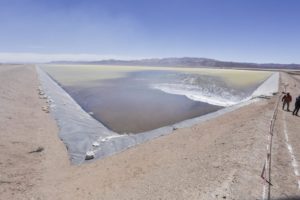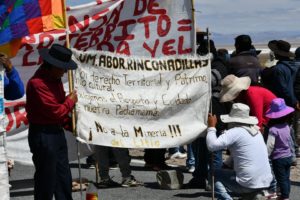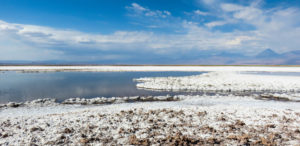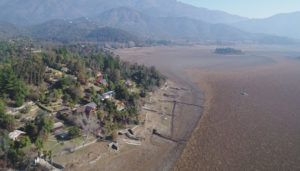‘White gold’, ‘21st century oil’ and ‘star mineral’ are just some of the nicknames given to lithium since it was first used to manufacture batteries in 1991.
A key component in everyday devices like cell phones and laptops, lithium batteries also play a vital part in the transformation of transport systems based on electric vehicles. Use of these will only grow as hydrocarbons deplete and the environmental consequences of burning them are felt.
68%
of global lithium reserves are found in the Argentina-Bolivia-Chile 'lithium triangle'
Defining the role lithium will play in South America’s future is urgent for two reasons. Firstly, the countries of the so-called ‘lithium triangle’ – Argentina, Bolivia and Chile – possess 68% of global reserves of the mineral in brine form, which is more practical and profitable to process than other forms. Secondly, companies from countries that form central pillars of the global economy are increasingly attributing strategic importance to the mineral and our region’s natural wealth.
Faced with this, South America is again revisiting the historic dilemma of what to do with its abundant natural resources. Will lithium drive another cyclical export boom in South America, or will it serve as a springboard to break this dynamic and explore new development pathways?
Understanding this difficult problem requires a deeper understanding of the realities and contradictions inherent in South American lithium – and a multidimensional approach. This is the task of Lithium in South America: Geopolitics, Energy and Territories, the second book by the Geopolitics and Common Goods Study Group (GyBC), based at the University of Buenos Aires’ Latin America and Caribbean Studies Institute.
…the region does not have projects that prioritise lithium as a vehicle for an ecologically respectful and deeply democratic form of national development
Flows of funds towards research hint at the increasing geostrategic importance of lithium. Looking at scientific papers, the registration of patents and production of raw batteries, it seems the Asia-Pacific region – clearly dominated by China – is gaining ground over the Euro-Atlantic.
Even countries like Germany, the cradle of the energy transition and a pioneer in renewable energy innovation, have been surpassed in these areas in recent years by China, which seems determined to dominate the race for electromobility.
Looking at the countries of the triangle, it’s clear that a series of public policies have hindered the sovereign industrialisation of lithium and impacted the livelihoods of the communities that inhabit areas around the salt flats where it is found.
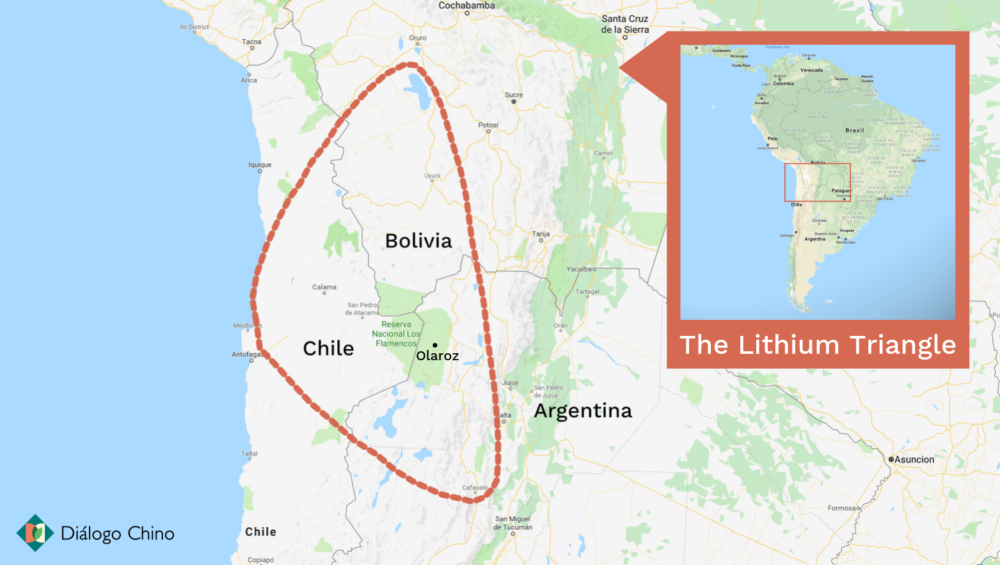
Argentina’s 1994 constitutional reform put provincial governments in charge of natural resources, with many deciding to enlist private companies to extract. There are currently more than 40 extraction projects in the hands of transnational companies at different stages.
In Bolivia, lithium is the property of the state. It seeks to grow its presence in the value chain and control production of the mineral. Whereas in Chile, the state also owns the resource but it grants concessions to private companies to exploit it.
National efforts at developing battery production are also worth noting. Bolivia has a growing and comprehensive industrialisation policy, which includes collaboration with German and Chinese companies. In Chile, although there is some pressure from national scientific bodies to scale-up global lithium value chains, the state confides in the private sector to carry this out.
Of all the countries in the triangle, Argentina most keenly lacks comprehensive proposals despite it having first-class human resources in decentralised scientific organisations such as CONICET and National Universities, which are called-upon scarcely by the province of Jujuy, where most lithium is found.
Furthermore, strong, organised opposition from salt flat communities against lithium exploitation has emerged to protect vital resources like water.
Many ventures in the triangle were preceded by environmental studies carried out by the lithium companies themselves without careful state reviews, rousing suspicion about the true impact of extraction on the delicate hydrological, social and productive balance of the salt flats.
Although the bulk of South American lithium is in the triangle, the mineral also exists in countries such as Brazil, although in the form of pegmatite or rock. As in the rest of the region, the same contradictions occur in Brazil, which is some way off using its own lithium for the production of batteries within its borders.
Except for Bolivia, the Argentine province of Jujuy and some pockets within the Chilean scientific community, the region does not have projects that prioritise lithium as a vehicle for an ecologically respectful and deeply democratic form of national development.
With this in mind, it’s difficult not to think that South America’s structural limitations for lithium production offer anything other than a bleak outlook. Without urgent measures to reverse the limitations of strategic planning for the mineral, a return for the region to its historical position as peripheral exporter to core countries looks likely.
The difficulties and inequalities that our fossil fuel-based society entails mean that the realisation of a new energy paradigm, and development of industrial and technical capacity in producer countries will only be viable if resources are given heritage status. The coming years will see critical junctures for the region’s decision-makers.
